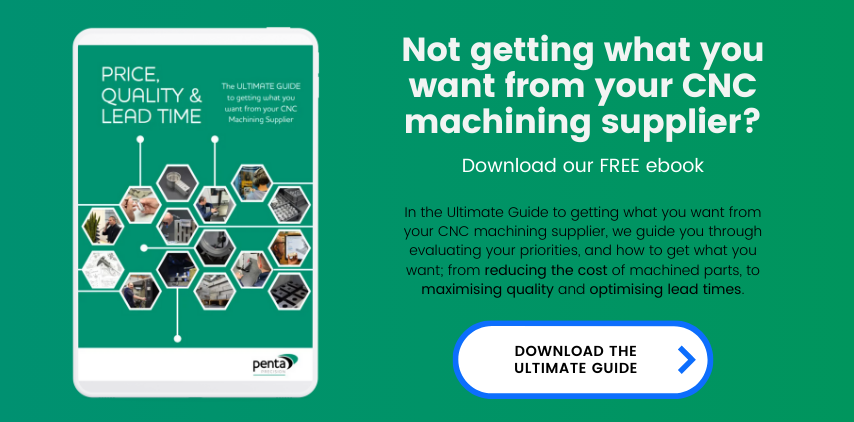 by Sam Brown
by Sam Brown
Operating in the engineering industry in 2021 has certainly been challenging. There is of course the ongoing Covid-19 pandemic; the consequent ‘pingdemic’ depleting workforces and causing driver shortages and supply chain problems; and all this disruption happening against the backdrop of Brexit import and export issues. Now, to top it all, engineering raw material prices have rocketed. And I really do mean rocketed. We have seen some material costs increase by 100-150% over the last 12 months.

It’s causing chaos. Uncertainty over availability means it’s difficult to get quotes for materials, and difficult to get quotes for manufacturing. The timeframe in which a quote remains valid is shortening significantly. We’re feeling the effects, and we know our customers are too.
What is causing the rising cost of materials?
It’s multifaceted. But in October 2021, one of the critical factors is the significant increase in the cost of gas and electricity as a result of the shortage of natural gas in Europe. This, combined with the cooler temperatures in autumn, and winter on the way, the demand for gas and electricity will go up, meaning that energy prices will continue to rise. This has a knock-on effect on the energy-intensive metal fabrication industries – and the cost increases are too much for any one supplier to just absorb.

It's not just a problem in Europe: global prices have been rising too. According to the Office of National Statistics, in July 2021 the price of steel per tonne was 97% higher than in a similar period in 2020 as a result of iron ore prices being at an all-time high. Similarly, the combination of increased demand for aluminium, along with a reduction in the availability of alumina and restrictions in energy usage in Yunnan, where much of China’s aluminium is produced, is pushing up the price of aluminium around the world.
And its not just metals. Plastic prices are also fluctuating, with acetal (POM) particularly affected. Again, energy prices and Covid-related supply chain issues are having an impact, but also the worldwide capacity for polymerising some engineering plastics, like acetal, are limited, and increased demand is causing shortages.
What does this mean for me?
With rising raw material costs, and fluctuations expected for some time, buyers of machined components will see higher prices for new and repeat work. If you have a call off order, with a price for your components agreed 12 months ago for example, you’ll be benefitting from a much lower price than you would get if quoted today.
And that is one of the major benefits of placing call off orders. By setting up your order for a larger batch of components and calling them off as you need them, either at regular intervals, or as your inventory depletes, you have a fixed price you can predict – very helpful for financial forecasting. It also means that you can rely on a 24/48 hour lead time for critical components, and there is no need to tie up storage capacity to benefit from a reduced price.
How can I manage material cost increases?
Being able to plan for the future and secure a price for a batch of components or assemblies gives a degree of certainty. I always recommend placing call off orders where you can, but if you’re not in that position, or if it is time to place the next call off order, you could consider:
- free issuing material to avoid any handling fees being added by your supplier
- placing a larger order or a call-off order – with prices on the rise, take advantage of today’s costs before they go even higher
- if possible, act quickly and decisively. We expect material costs to continue to rise into 2022 before stabilising, so delaying in the hope of catching a lower price wave is unlikely to pay off
- investigate using a different material – a lower or different grade may be cheaper, and still offer adequate performance characteristics for your component.
One of the most important things is to keep an open dialogue with your supplier. Understand how rising material costs are affecting them, and find out what they can do to help give you certainty going forward. For example, they may be able to purchase material in advance, or help you benefit from preferential rates from trusted material suppliers. This is where choosing a reliable supplier that offers a true partnership is so important – it’s the best way to find value.
Partner with Penta
At Penta we are focussed on developing strong partnerships with our customers. Our formula for delivering an exceptional service is known as our 3Cs:
- we communicate with our customers about industry challenges and are creative in finding solutions that work for our customers, while securing Penta for the long term
- we take care with the projects placed with us – we’re meticulous at every stage and have a ‘right first time’ culture embedded across the organisation
- we are consistent with our service through our standardised internal processes so you have an experience you can rely on.
Find out more about our 3Cs and our Proven Process
If you’re facing challenges with material availability and price rises, or are getting unexpected quotes, quality or experience from your existing supplier, get in touch with our time served estimators to discuss your project.


